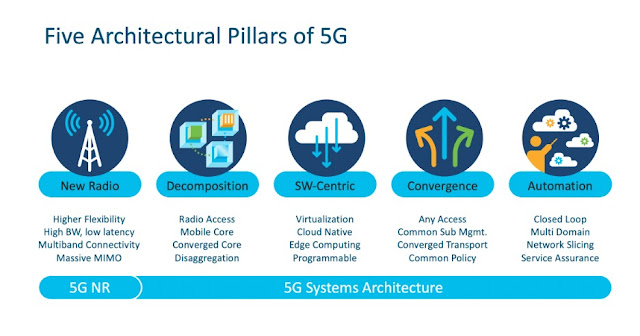Saturday 28 January 2023
Common Database Infrastructure in Cisco IOS XE Software Simplifies 160+ Enterprise Devices
Tuesday 24 January 2023
Enabling Metaverse and next generation content the right way
Sunday 22 January 2023
Launch Your Cybersecurity Career with Cisco CyberOps Certifications | Part 1
Cisco CyberOps Certification Evolution
Cisco SOC Tier 1 Analyst Learning Path
SOC Analyst Job Outlook
Thursday 19 January 2023
Communication Service Providers: the Potential Power Behind an Inclusive Internet
CSP industry economics are challenging
CSPs must transform
Roadmap to success: transition to platform business model
Modernization and automation
CSPs must invest in deeper partnerships
Implementing B2B2X business models
Aligning with Cisco’s purpose
Tuesday 17 January 2023
Three Best Practices to Enable Partner Success on AWS Marketplace
1. List the right products
2. Align the sales teams around co-selling
3. Invest in developing processes to ensure operational success
Accelerating opportunity and growth
Thursday 12 January 2023
You got legacy devices, we got Cisco DNA Center
Emphasis on Tool Consolidation
What functionality is available on Cisco DNA Center for legacy devices?
What is the Cisco DNA Center licensing requirement for legacy devices?
Saturday 7 January 2023
We’ve Doubled the Number of Cisco DNA Center Reservable Sandboxes
The Cisco DNA Center sandboxes have always been in high demand. For a while now we have had two always-on and two reservable sandboxes for Cisco DNA Center. With each of these sandboxes requiring at least one Cisco DNA Center appliance and several Catalyst 9000 switches, it’s easy to see why they were some of the most expensive sandboxes we have. (Hence, the limited number.) Expensive not only because of the hardware appliance and physical Catalyst 9000 switches, but also from a rack footprint, power, and cooling perspective.
Fully test all the features of the Cisco DNA Center platform including building SDA fabrics
Taking advantage of some virtualization secret sauce and holiday magic, the sandbox team has done a tremendous job and they have launched 4 Cisco DNA Center reservable sandboxes. Yes, you’ve read that right! We have doubled the number of Cisco DNA Center reservable sandboxes! And all 4 of them are running the latest version of code 2.3.3.5 as of the writing of this blog and have a Cisco ISE server so you can fully test all the features of the Cisco DNA Center platform including building SDA fabrics. There are two CoreOS virtual machines attached to the access switches for traffic generation and client troubleshooting. We’ve also included a CentOS DevBox that provides a developer environment with Python, virtual environment, Ansible and other tools already preinstalled.
Test and develop your applications and integrations
No cost to you
Friday 6 January 2023
Perspectives on the Future of Service Provider Networking: 5G and the future of enterprise wireless networks
Three ways service providers can make the most of private 5G
Why choose an “as-a-service” model?
Thursday 5 January 2023
Maximize Network Wide License Utilization with Smart Licensing
What is smart licensing?
Why should I use smart licensing?
| Customer Needs | IOS XR Flexible Consumption Model (FCM) |
| Customers want strategic partners who can provide commercial offers permitting them to pay incrementally to expand capacity as demand for their consumer and business services rises. | FCM is a pay-as-you-grow model which enables customers to invest in the network capacity as demand grows. Having this ability to add capacity as and when needed helps customers with their network and capacity planning. |
| Customers want investment protection with the portability of software across hardware resources to meet demand across any one of their markets. | FCM has a subscription component which includes software portability. This provides investment protection by enabling porting of licenses to next-generation hardware when a customer is ready. |
| Customers want a software license management experience that enables porting of licenses across the corporation to shift capacity to markets in demand. | FCM permits service providers to pool software licenses and lower initial investments required to incubate new services. |




























